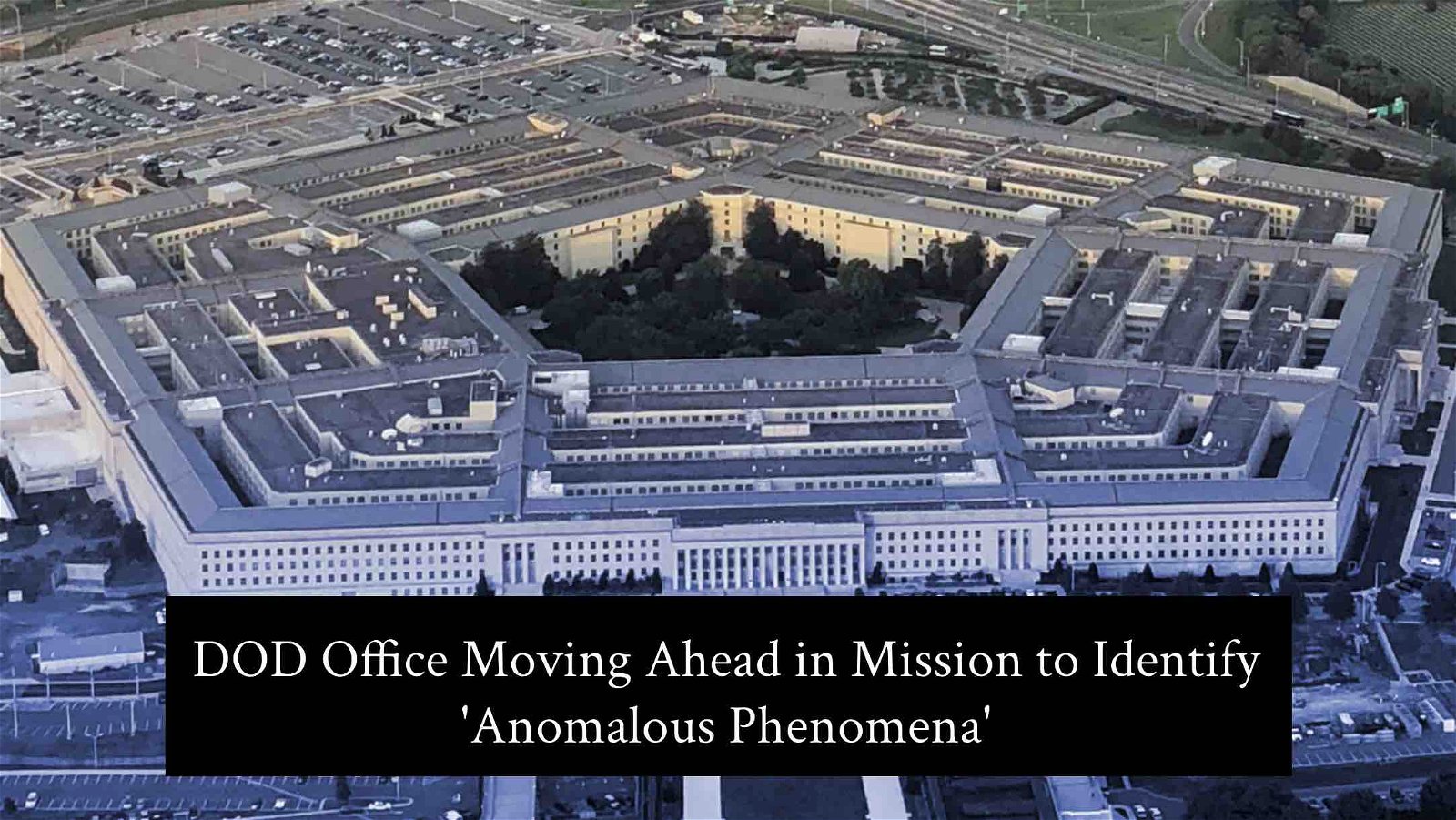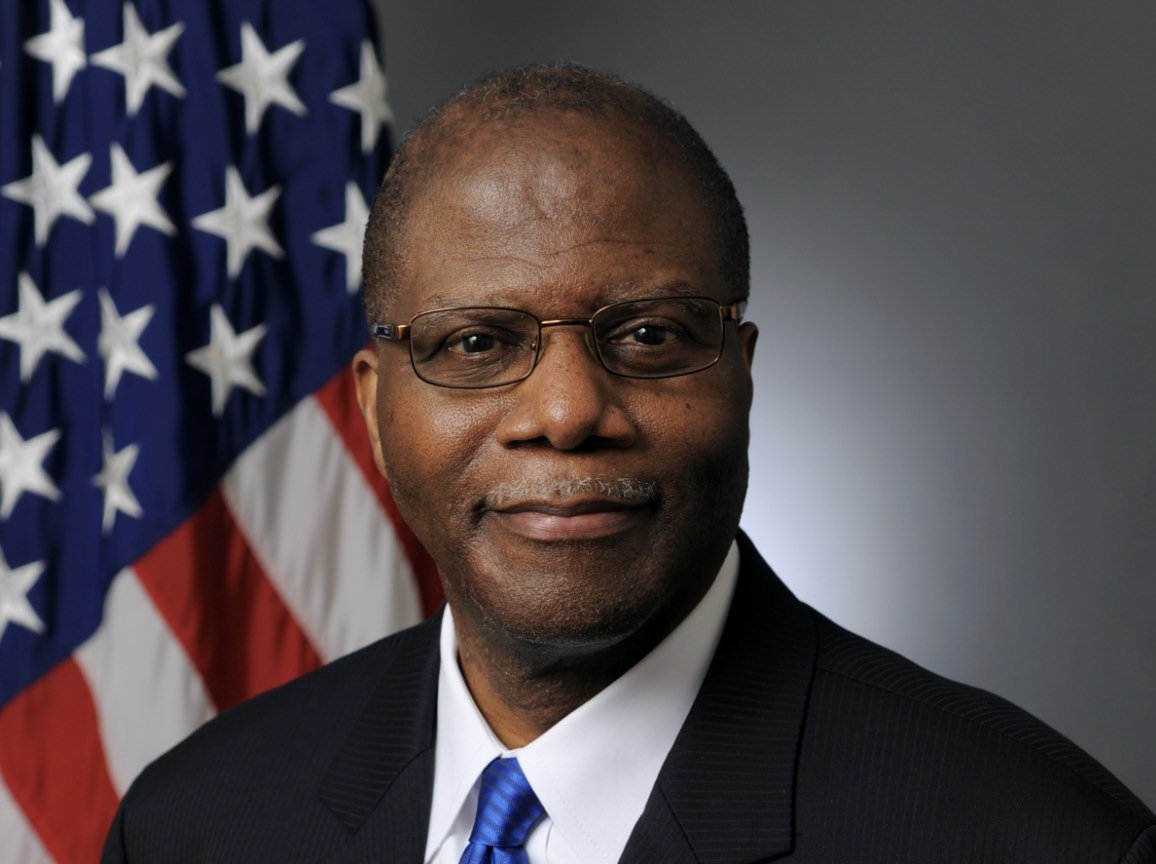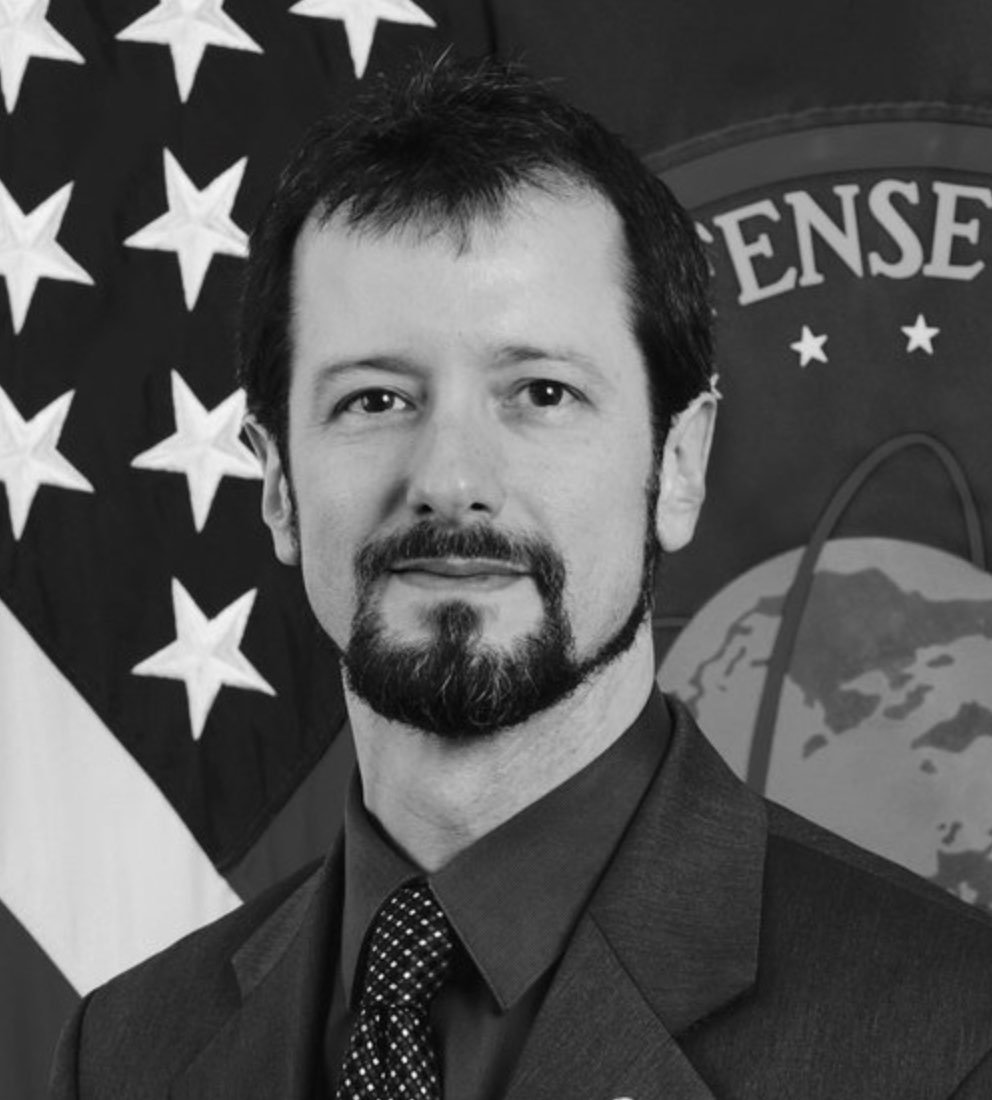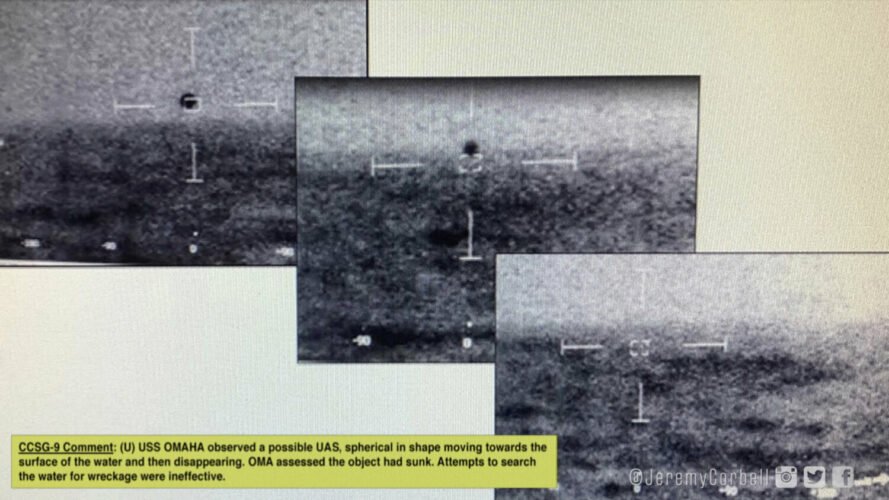

Welcome to this special holiday edition of The Intelligence Brief… this week, as stockings are being hung by the chimney, and inclement weather has been slowing the travel of many Americans (including this humble reporter), this week’s special double-sized Christmas Edition of the newsletter will be offering a comprehensive breakdown of a recent DOD media roundtable that gave the public an advance look at the efforts of the All-domain Anomaly Resolution Office (AARO). Specifically, we’ll be looking at 1) what the Office’s leadership had to say last week on its efforts to collect and resolve reports involving UAP, 2) why “UAP” now has a slightly different meaning, 3) how AARO plans to extend its studies deeper into history, 4) whether or not any exotic technologies have been detected, 5) the media’s fixation on numbers and other superficialities, 6) whether any trans-medium objects have been detected, and much more.
Reading this in a browser? Subscribe to get this newsletter sent directly to your inbox.
Quote of the Week
“[A]s a physicist, I have to adhere to the scientific method, and I will follow that data and science wherever it goes.”
– Sean Kirkpatrick, Director, The All-domain Anomaly Resolution Office
Before we get to this week’s analysis, a few of the stories we’ve been covering at The Debrief include how the U.S. Air Force is preparing to unleash ‘Hypersonic Mayhem’, and why the perception of time is not universal, even among humans. Elsewhere, our French correspondent Baptiste Friscourt updates us on how astronauts, historians, scientists, and officials recently convened to discuss stigmas surrounding UAP. You can also get all the latest updates in videos from The Debrief, including the newest installment of Rebelliously Curious with Chrissy Newton, over on our YouTube Channel; lastly, you can find links to all our latest articles at the end of this newsletter.
A Quick Holiday Travel Update: On a personal note, I’d like to extend best wishes to everyone out there facing the challenges of traveling during this particularly busy holiday season. Within the last 72 hours, I was also one of the many Americans who has endured flight delays, cancellations, and other perils related to holiday travel in the midst of steadily worsening weather (this included boarding a plane to my final destination last night, only to have a very exasperated pilot walk off the aircraft, and the flight canceled, which led to a long night’s drive in a rental car).
Hence, we’re a bit late getting to our analysis of last Friday’s media roundtable with the leadership of the DOD’s All-domain Anomaly Resolution Office. So here’s wishing everyone safe travels to wherever your journey may lead you this holiday season… and with that all behind us, let’s dive right into things.
What We Learned from the DOD’s All-domain Anomaly Resolution Office (AARO) Media Roundtable
Last Friday, the Pentagon held a special media roundtable that briefly addressed a few of the findings of the DOD’s new All-domain Anomaly Resolution Office (AARO) in advance of the release of a report on its efforts to collect information on unidentified objects (commonly known as UAP) encountered by the U.S. military that is now several weeks overdue.
In attendance was Under Secretary of Defense for Intelligence and Security Ronald Moultrie, who also appeared at a Congressional hearing earlier this year that addressed the subject. Joining Moultrie was Dr. Sean Kirkpatrick, the director of AARO, whose participation marked his first public appearance since taking over the DOD’s new office. Also in attendance was Pentagon spokesperson Sue Gough, who introduced Moultrie and Kirkpatrick.
Although video of the press event was apparently not made available afterward, the DOD issued an official news release that outlined a few key takeaways, as well as a complete transcript of the briefing.
“We have an important and yet challenging mission to lead an interagency effort to document, collect, analyze and when possible, resolve reports of any unidentified anomalous phenomena,” Kirkpatrick said during the briefing, adding that the DOD has “transferred the data and responsibilities from the previous Navy-led UAP task force, and disestablished it.”
“During that transition, we’ve taken the opportunity to expand and standardize and integrate UAP reporting and reevaluate the data we’ve collected,” Kirkpatrick added.
Moultrie also emphasized that the DOD “takes public interest in UAPs seriously,” adding that “we are fully committed to the principles of openness and accountability to the American people. We are committed to sharing as much detail with the public as we can,” mirroring sentiments he expressed during the Congressional hearings in May. Following opening statements from Moultrie and Kirkpatrick, several questions were fielded from the media.
Although the event was widely reported in the media, little of the coverage offered any substantive takeaways, with most of the emphasis by the press narrowly focused on the number of incidents involving UAP that AARO has collected to date.
So what did we really learn during Friday’s media roundtable?
What follows are a few of the most notable takeaways from the event, with analysis of what it all means in the context of the DOD and AARO’s unique mission going forward.
UAP: (Another) New Name for An Old Problem
Following a brief introduction by Gough, Moultrie expressed his pleasure in attending to provide “an update on the department’s efforts to address unidentified anomalous phenomena, or UAP,” thereafter seemingly acknowledging the historical nature of the DOD’s relationship to the phenomena with a reference to his appearance before Congress “for the first open hearing on UAP in 50 years.”


“You may have caught that I just said unidentified anomalous phenomena,” Moultrie added, noting the DOD’s shift away from its previous use of the term unidentified aerial phenomena, itself a term borrowed from the United Kingdom’s Project Condign as part of a rebranding attempt in recent years to help remove the stigmas associated with an even earlier terminological predecessor: unidentified flying objects, or UFOs.
“This new terminology expands the scope of UAP to include submerged and trans-medium objects,” Moultrie explained, noting that “Unidentified phenomena in all domains, whether in the air, ground, sea or space, pose potential threats to personnel security and operations security, and they require our urgent attention.”
Two Reports Have Already Been Submitted, but Still No Sign of “Aliens”
Although the public still awaits an unclassified version of a report on the DOD’s efforts to collect and analyze UAP reports that was due on October 31, Moultrie said on Friday that two reports had already been submitted earlier this year, in accordance with wording outlined in the 2022 National Defense Authorization Act (NDAA).
“The department has already submitted its first congressionally-mandated quarterly reports on UAP in August in November,” Moultrie said, “and we will continue to provide quarterly updates.”
During the roundtable, New York Times reporter Julian Barnes asked whether any evidence “shows any one of these anomalies is a space alien,” to which Moultrie and Kirkpatrick both responded no, albeit with a few caveats.
“We have not seen anything . . . that would lead us to believe that any of the objects that we have seen are of alien origin,” Moultrie said, although noting that AARO’s mission is still in its early stages, and adding that “if we find something like that, we will look at it and analyze it and take the appropriate actions.” Moultrie did not elaborate on what such “appropriate actions” might entail.
Only weeks ago, Barnes wrote an article in the Times which, at times, carried a dismissive tone toward the potential that there could be exotic possibilities (i.e., extraterrestrial technologies) associated with any of the DOD’s current UAP investigations. Although no data indicating anything extraordinary has been presented currently—and Moultrie and Kirkpatrick were clear on that point—they nonetheless expressed a refreshing degree of scientific open-mindedness toward any such possibilities their investigations may yield.
“[W]e are structuring our analysis to be very thorough and rigorous,” Kirkpatrick told Barnes at the roundtable. “We will go through it all. And as a physicist, I have to adhere to the scientific method, and I will follow that data and science wherever it goes.”
Focused on Numbers
Several of the questions from the media were heavily focused on the number of reports AARO has collected involving UAP incidents since its establishment. This, perhaps in lieu of better queries that might have involved collection methods AARO employs, or characteristics of the phenomena itself.
Part of this focus on the number of UAP reports gathered seems to have stemmed from confusion by members of the press as to whether more reports have been gathered since the initial 144 cited in a June 2021 Office of the Director of National Intelligence (ODNI) report; a point that was already addressed once before by Moultrie when he joined Deputy Director of Naval Intelligence Scott Bray during their appearance at the May 2022 Congressional hearings.


“I don’t want to get ahead of the ODNI report that will have all the numbers in it,” Kirkpatrick said at one point. However, both he and Moultrie added in response to questioning from the AP’s Tara Copp that “significantly” more reporting had occurred since the 2021 report. With the inclusion of some older incidents AARO is reviewing, the number comes out to be “several hundreds,” Kirkpatrick added, while noting that the total was not significantly higher than the 400 or so reports referenced during May’s Congressional hearing.
“Going Backwards”: The AARO of Time
On the subject of “several hundreds” of reports that include a look further back into the past than those examined by AARO’s predecessor, the Navy’s Unidentified Aerial Phenomena Task Force (UAPTF), Kirkpatrick further clarified just how far back some of the reports his Office is now investigating go back.
“I would characterize it as on the total reporting since, I believe our cut off; going backwards was 1996 through now,” Kirkpatrick said.
So historical reports go no further back than 1996… for now, at least. That’s still eight years earlier than the cutoff of the UAPTF’s cutoff of 2004, a date which obviously was intended to account for the widely discussed incident involving UAP observed by Navy personnel in service to Carrier Strike Group 11 during training operations off the southern California coast that year. However, Kirkpatrick acknowledged that language in the current version of the 2023 FY NDAA, which calls for expanding the scope of historical evaluations back to as early as 1945, will likely further expand the scope of what his office investigates. ]
“I don’t want to talk too much about it until they actually sign it,” Kirkpatrick said on Friday, in acknowledgement of the forthcoming legislation, though adding, “that is going to be quite a research project, if you will, into the archives and going backwards in time.”
No Trans-Medium Objects?
During the session, Moultrie and Kirkpatrick were also asked about the purported “trans-medium” capabilities of some UAP.
“We have not, to the best of my knowledge, had any credible reporting, that we’ve been able to analyze of trans-medium activity or trans-medium objects,” Moultrie responded, adding that AARO is still processing data on the UAP incidents it has collected, and that it is still “early on in the process.”
“I don’t want to be definitive to say that there’s nothing that is there. But I would say that we have not seen since the — the May hearing, we have not seen any – any indications that there have been trans-medium activities with UAPs.”


Following the briefing, there again appears to have been a fair bit of confusion regarding Moultrie’s statements, which many took as indicating that there is no data AARO has obtained that appears to indicate UAP displaying trans-medium capabilities (i.e., that some of these objects can traverse domains from undersea to air, or even into space). However, a couple of points are worth addressing here.
First, Moultrie specifically noted that no data collected since the Congressional hearing in May appears to indicate that there have been trans-medium activities associated with UAP. Although this statement is perhaps somewhat open to interpretation, one way of reading it entails that none of the recent reports AARO has collected indicate trans-medium capabilities… but that doesn’t necessarily mean that there is no such data in AARO’s database of UAP incident reports. If there hadn’t been any incidents where such capabilities had been observed, it would be hard to understand why this would have remained such a talking point over the last several months with relation to the establishment of the Office.
The other relevant point has to do with the name of the Office itself. The “All-domain Anomaly Resolution Office” does not necessarily imply that some UAP possess trans-medium capabilities; it does, however, note that the phenomenon is not exclusive to air, and that the DOD is now monitoring for the phenomenon undersea, in the air, and in space. However, it should be noted that even in the official Pentagon release announcing the formation of AARO, it stated that its mission to resolve UAP incidents “includes anomalous, unidentified space, airborne, submerged and transmedium objects.” Once again, it seems difficult to imagine that this would be included if there weren’t at least some anecdotal information AARO and its predecessors have collected involving some UAP that appear to display such capabilities.
Final Thoughts: Appeasement of the Public?
The brevity of Friday’s media roundtable allowed for only a limited amount of discussion of AARO and its work at this early stage in its mission. This, paired with the often lackluster questions from members of the press that focused on superficialities, as opposed to seeking a more comprehensive understanding of AARO’s data collection and how it is being processed in order to assess and understand the nature of UAP, left much to be desired.
However, on a more promising note, Moultrie and Kirkpatrick both appeared to convey a sincere respect for transparency and the scientific method, while also citing concerns about challenges to national security; whether they originate from the UAP themselves, or from the national security concerns related to protecting the DOD’s methods of detecting these phenomena.


Overall, the message being conveyed by the media roundtable appeared to be one of appeasement: the latest Congressionally mandated ODNI report on UAP was due on October 31 and is now several weeks late. Rather than remaining silent on the issue, Moultrie and Kirkpatrick addressed the report and its imminent arrival, as well as questions about some of AARO’s current efforts. It’s not the report everyone has been wanting to see, but the DOD’s willingness to address the issue certainly does appear to be consistent with the transparency and other commitments to AARO’s mission they have spoken about… for now, that is indeed promising.
We won’t get any clearer idea until the report is finally released, but going forward, let’s hope that AARO’s commitment to government transparency, scientific methodology, and unbiased analysis of the data it collects is a trend that continues, as Kirkpatrick’s office carries forward with its mission to better understand the anomalous phenomena our military says it occasionally encounters.
That wraps up this week’s installment of The Intelligence Brief. You can read past editions of The Intelligence Brief at our website, or if you found this installment online, don’t forget to subscribe and get future email editions from us here. Also, if you have a tip or other information you’d like to send along directly to me, you can email me at micah [@] thedebrief [dot] org, or Tweet at me @MicahHanks.


Here are the top stories we’re covering right now…
- The U.S. Air Force is Preparing to Unleash Hypersonic Mayhem
The Air Force Research Laboratory is partnering with Fortune 500 defense contractor Leidos to design and develop the hypersonic Mayhem surveillance drone, the first drone designed to travel over five times faster than the speed of sound.
- The Perception of Time is not Universal Even Among Humans
Researchers studying how fast different animal species perceive time have found that small animals, those that fly and underwater predators, see things way faster than humans.
- FBI Warns of “Horrific Increases” In Sextortion Schemes That Have Already Victimized Thousands of Children Online
The FBI issued a stark warning about a “horrific increase” in children being targeted in sextortion schemes, which has already victimized thousands of youths.
- Creating a Transient Star in the Laboratory
The recent achievment of fusion ignition marks the first instance where humans were able to create the likeness of a tiny transient star in the lab.
- Astronauts, Historians, Scientists, and Officials Convene to Discuss Stigmas Surrounding UAP
The International Symposium on UAP Research, a virtual event organized by the company Vertical Project Media, was held on October 16th, 2022.
- Scientists Develop First-Ever Long-Lasting Synthetic-Biological Armor Capable of Stopping Supersonic Projectiles
Researchers have created a new long-lasting synthetic-biological material capable of absorbing impacts from supersonic projectiles that could revolutionize the future of armor.
- The Case For Alien Life Elevated By The Exciting First-Ever Confirmation of Two Exoplanet Water Worlds
Researchers from the University of Montreal have confirmed the presence of two water worlds orbiting a star 218 light years from earth.
- Despite Micrometeoroid Impacts NASA Says James Webb Telescope Should Survive and Thrive for Another 20 Years
Following the announcement that the James Webb Space Telescope has already endured 14 micrometeoroid impacts, NASA says that, barring an unforeseen event, the groundbreaking observatory should still be able to conduct science operations for another 20 years.
- “Signals of Interest” Turn Up in SETI Search Aided by Citizen Scientists
Welcome to this week’s installment of The Intelligence Brief… while the big news this week involves the U.S. Department of Energy’s historic achievement of fusion ignition, elsewhere, advances in the search for extraterrestrial intelligence (SETI) in recent days are pointing to promising results. In our analysis this week, we’ll be looking at 1) what the results of a recent Green Bank Telescope search may have yielded, 2) how citizen scientists played a role in assessing the latest batch of SETI data, and 3) why […]